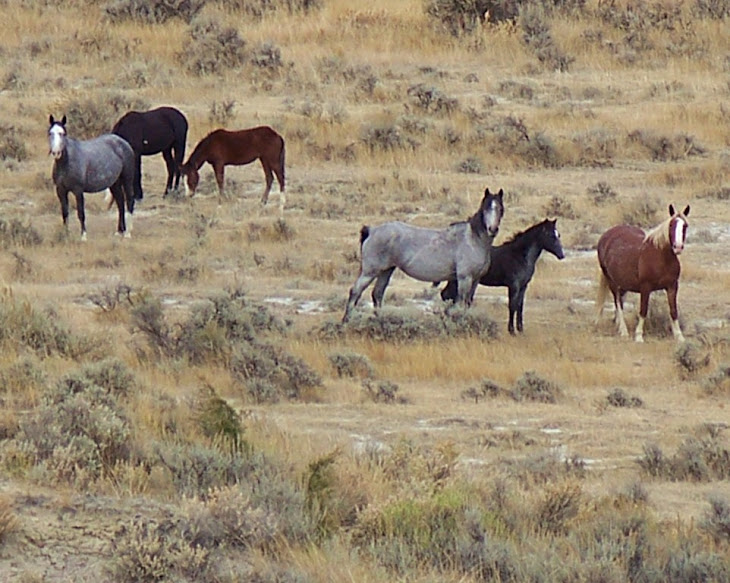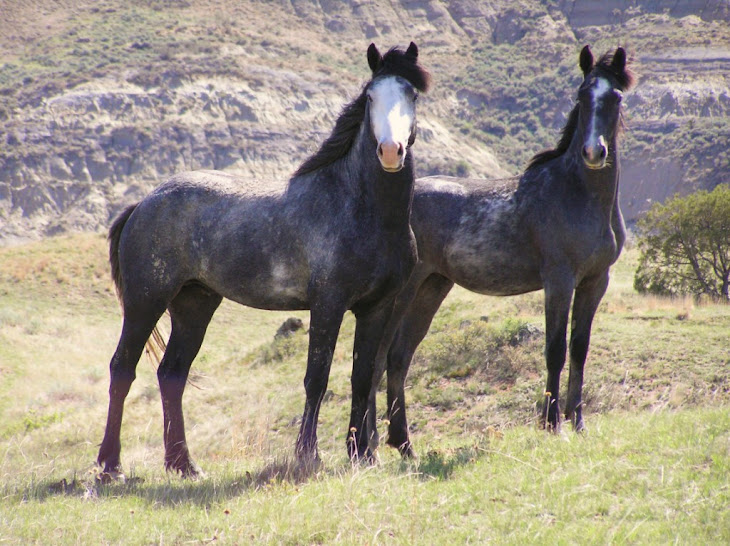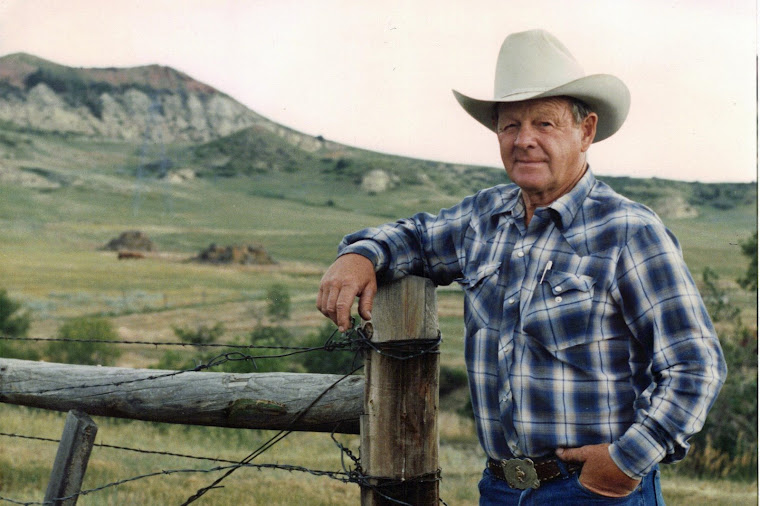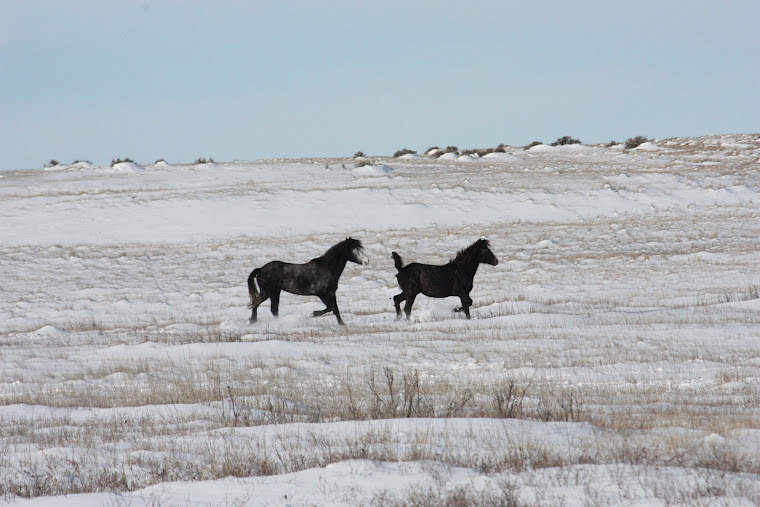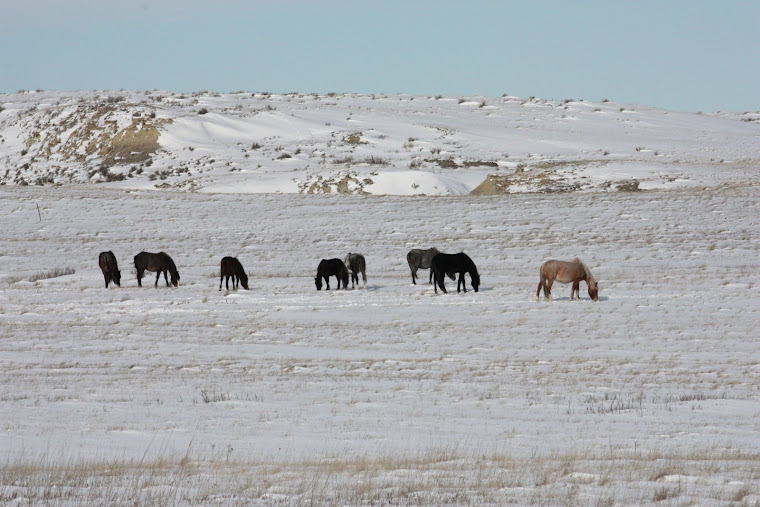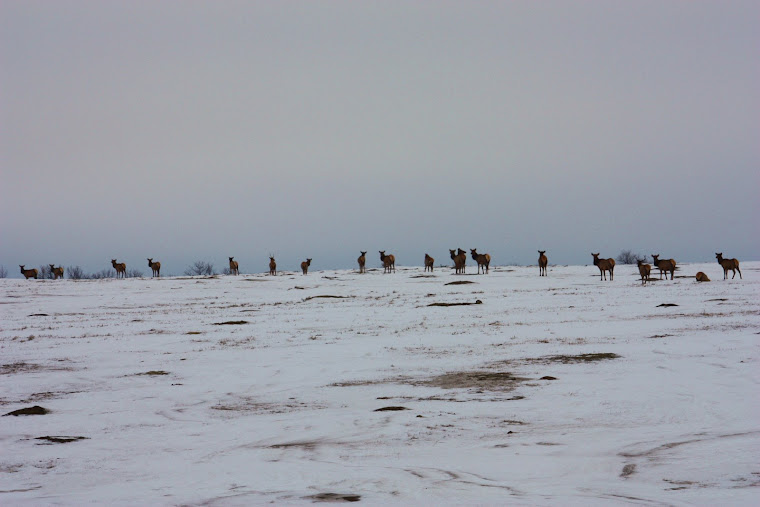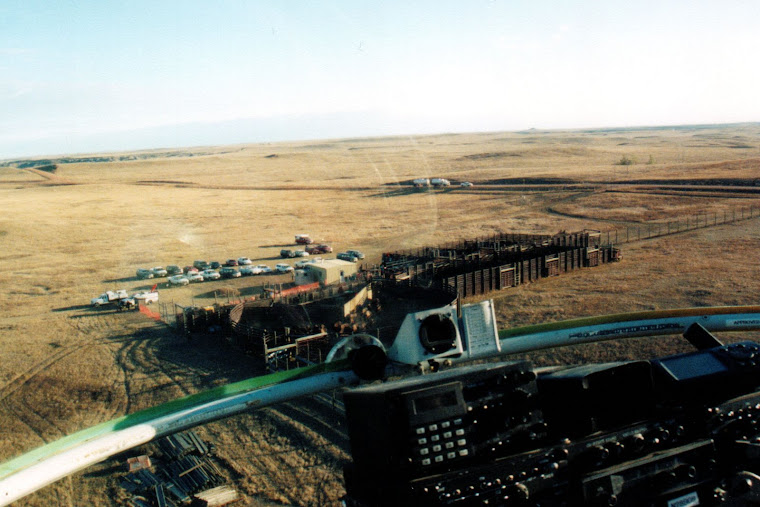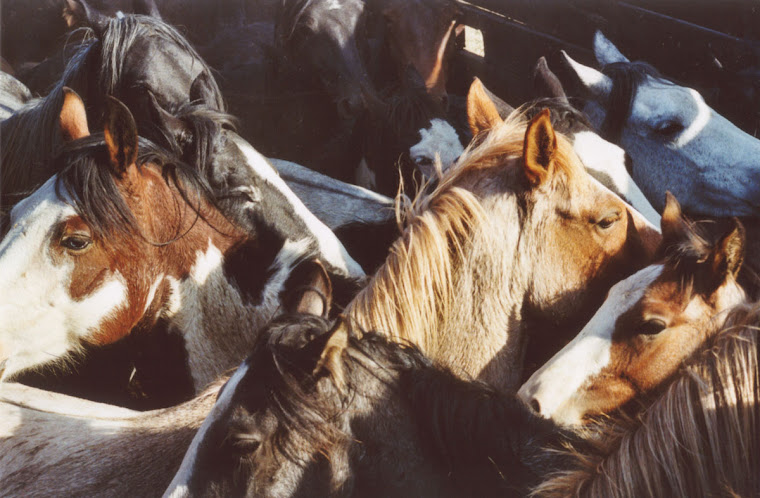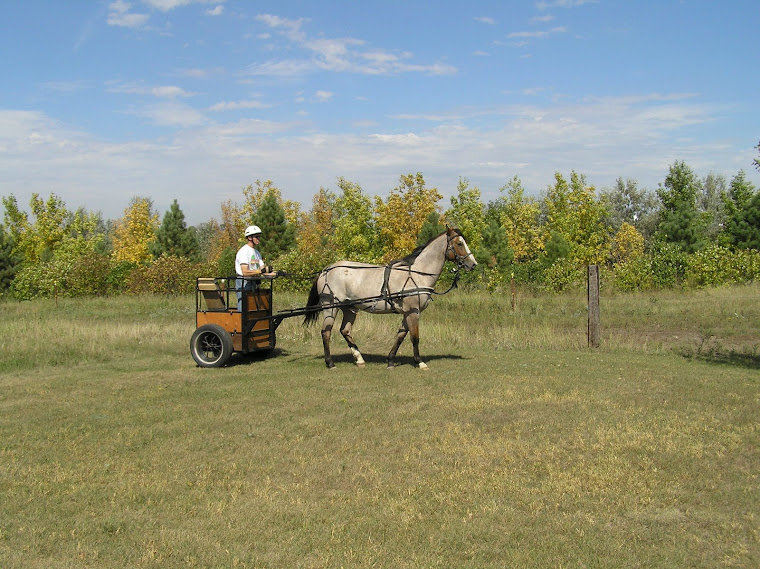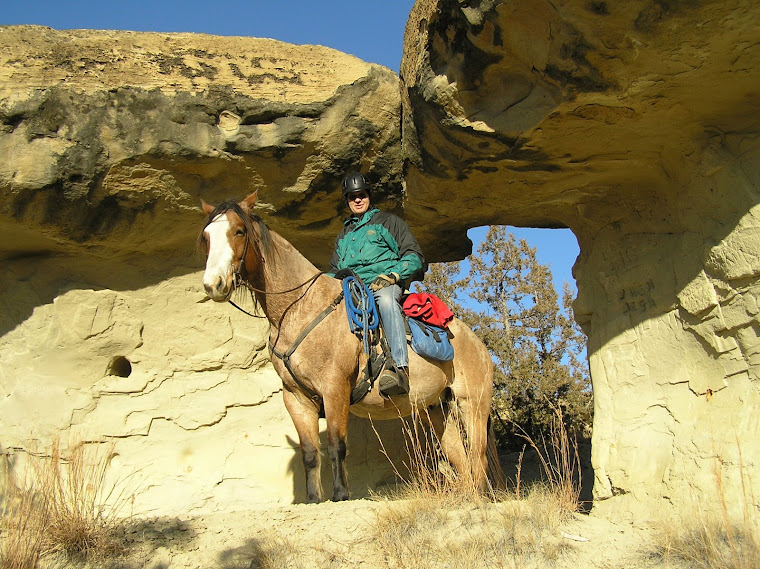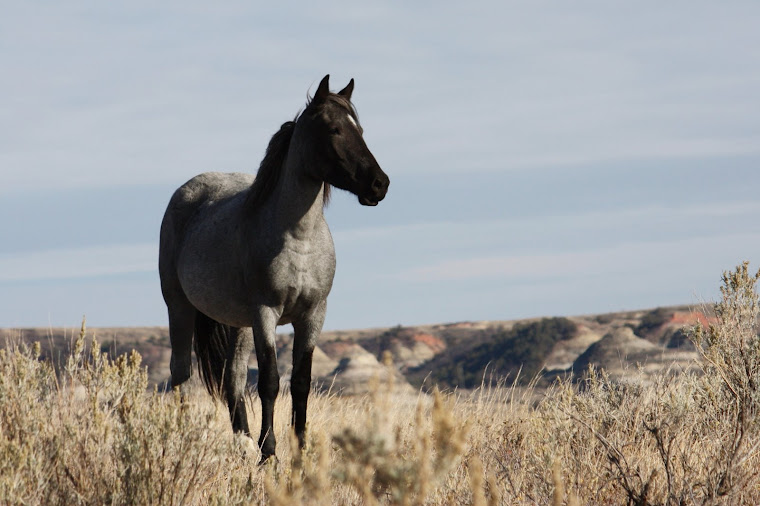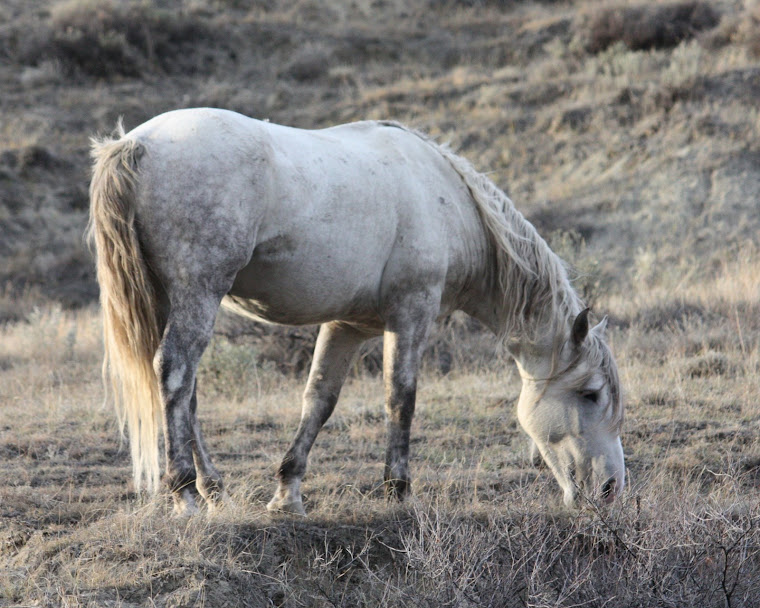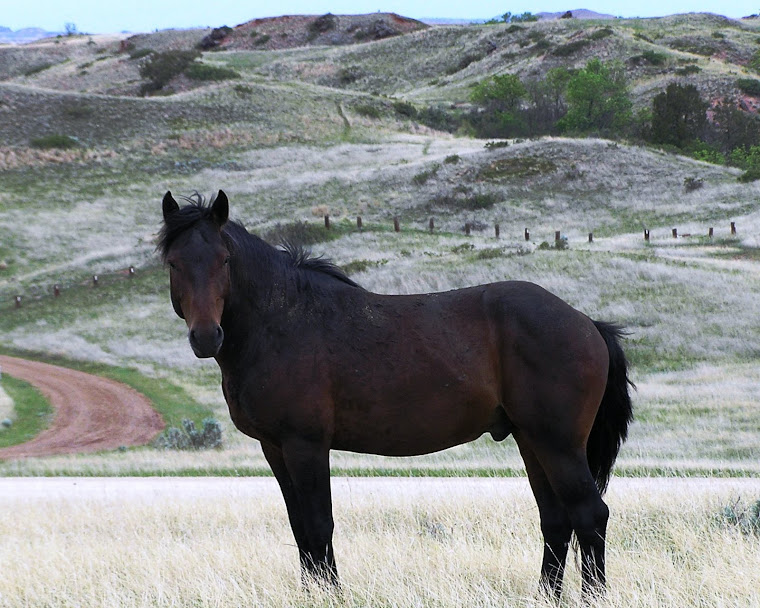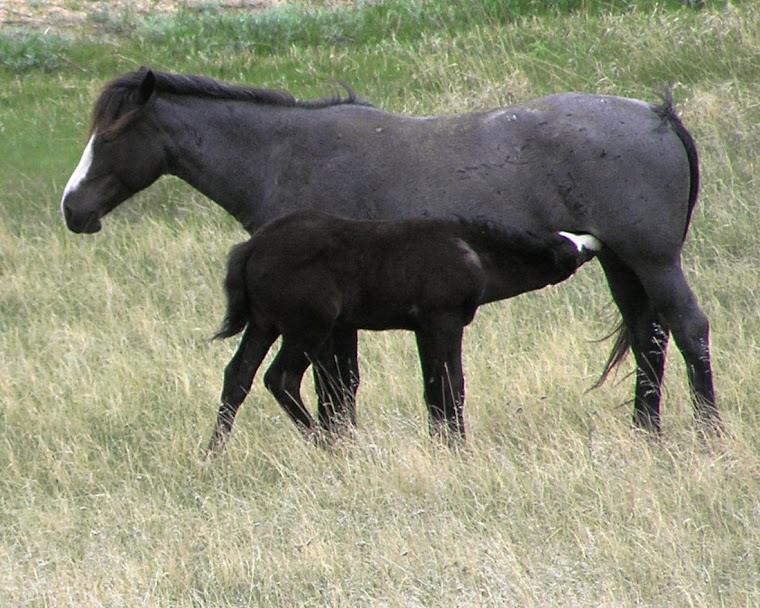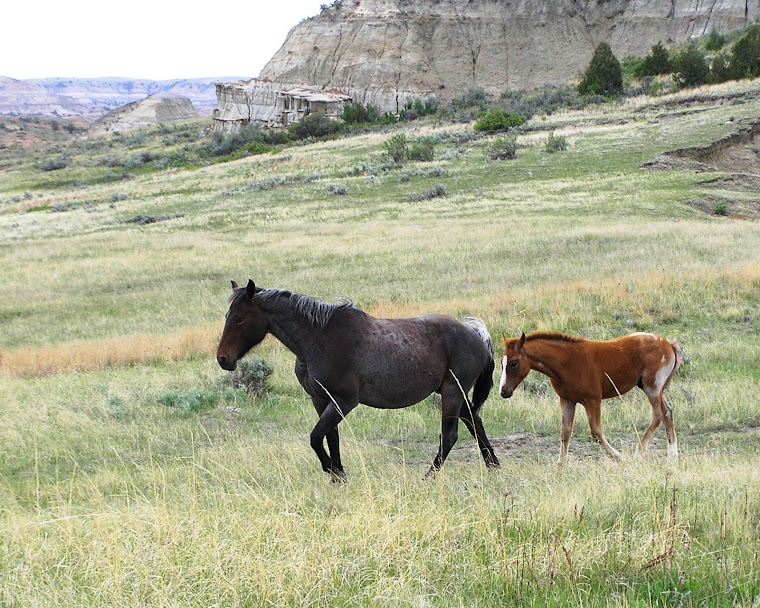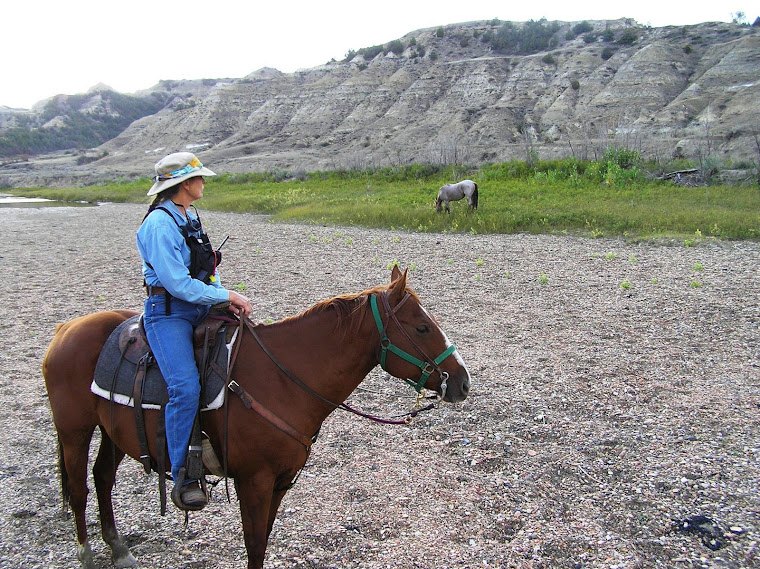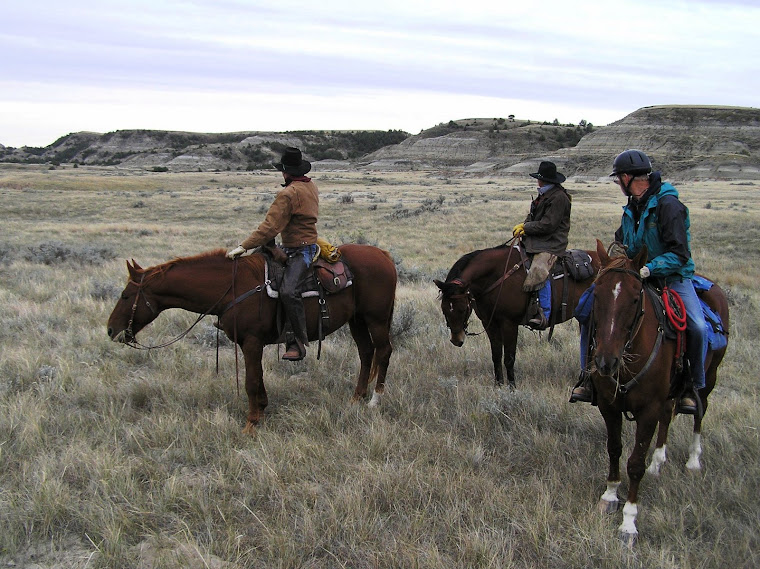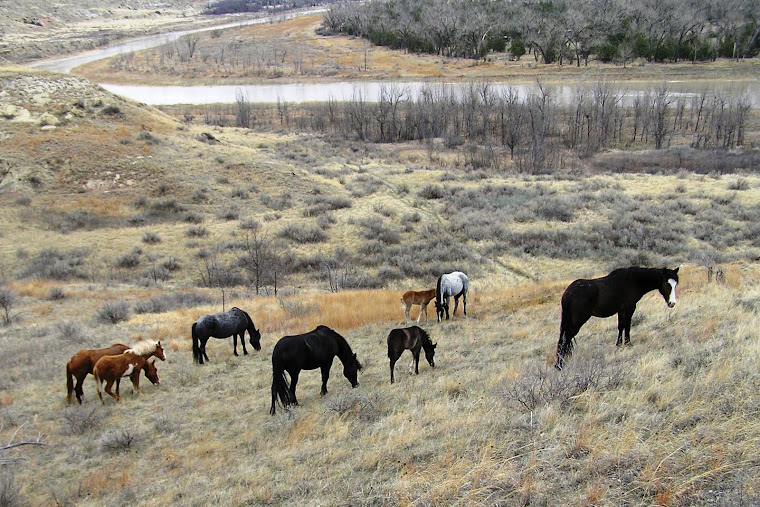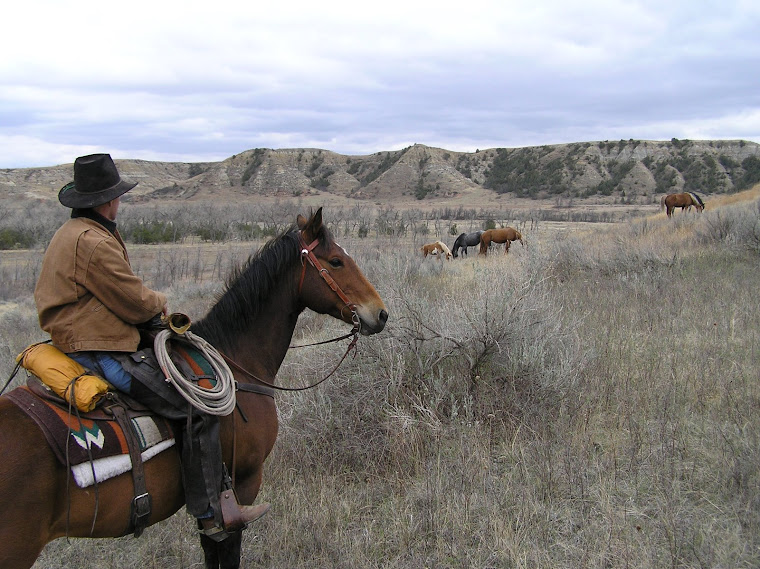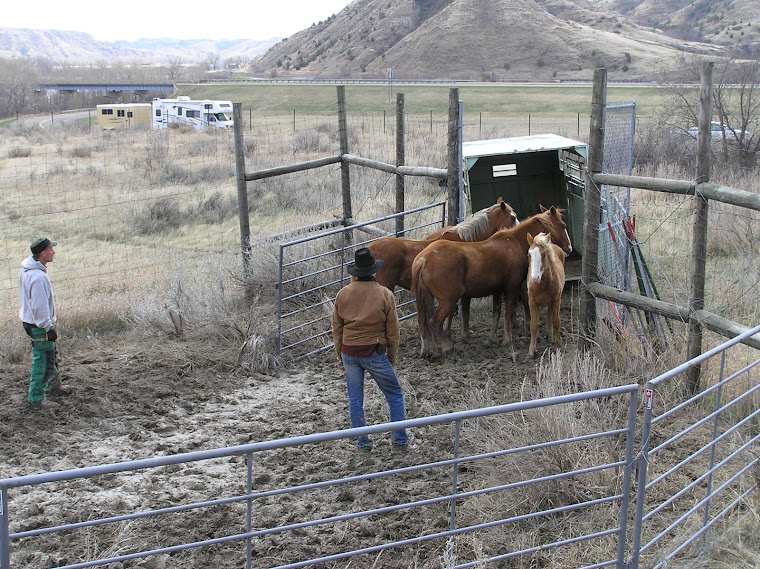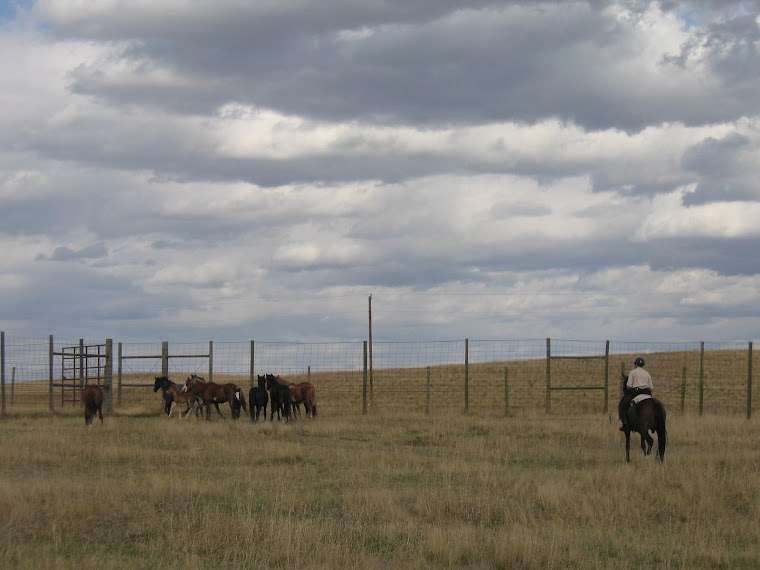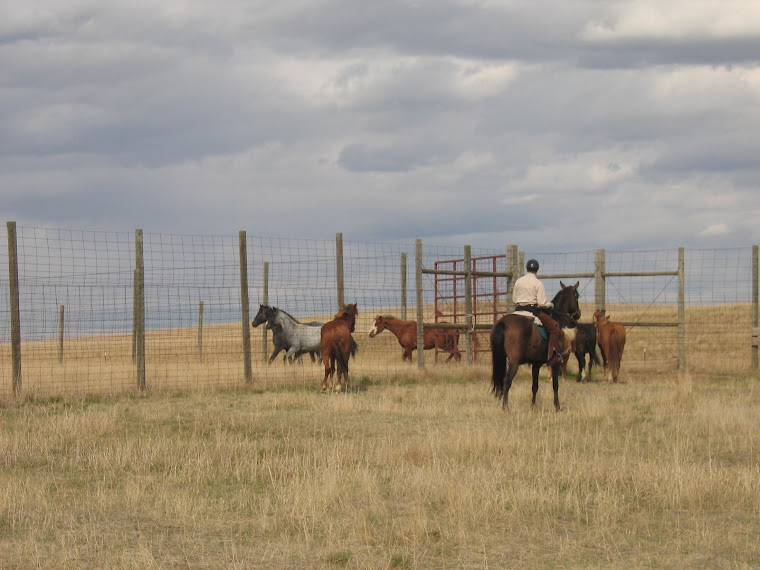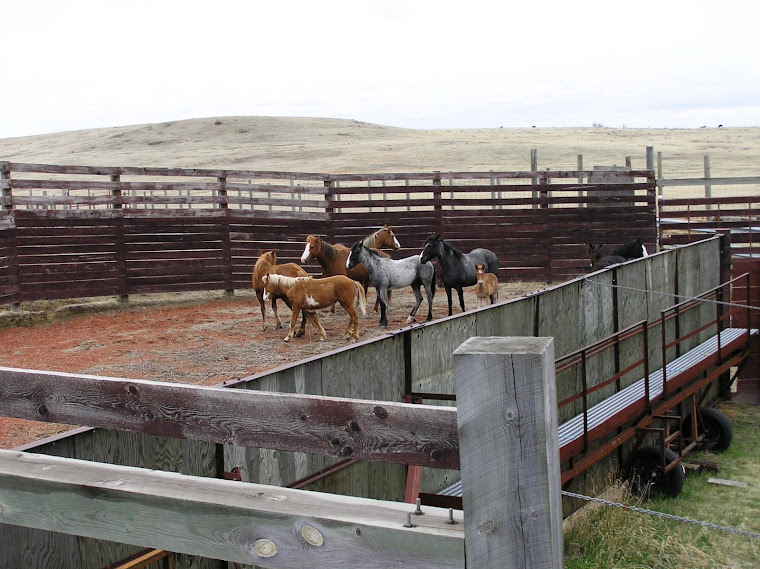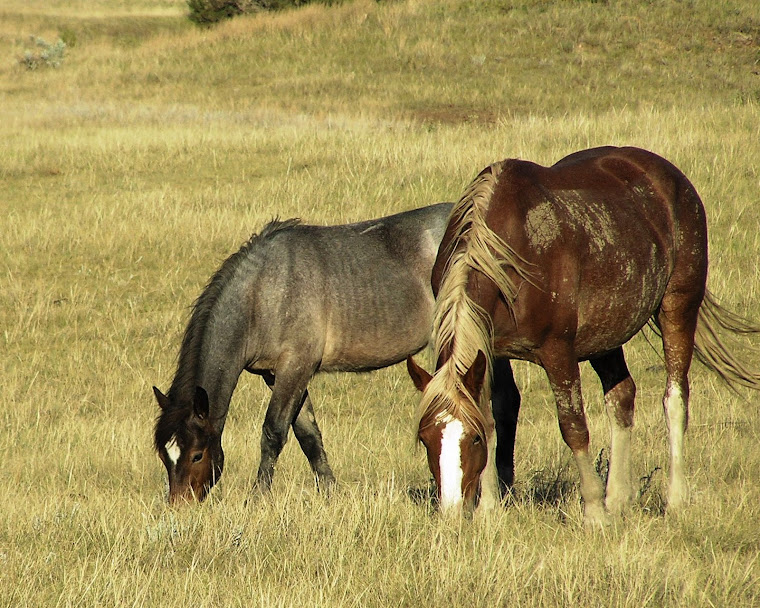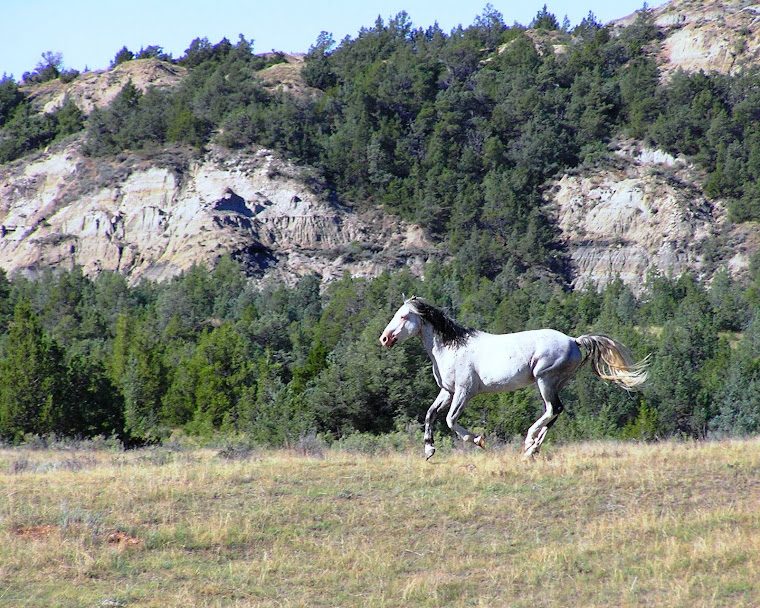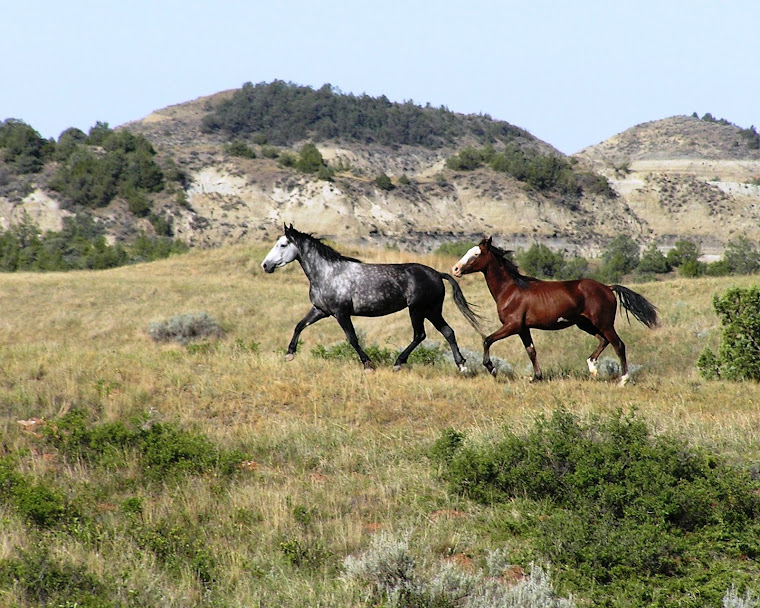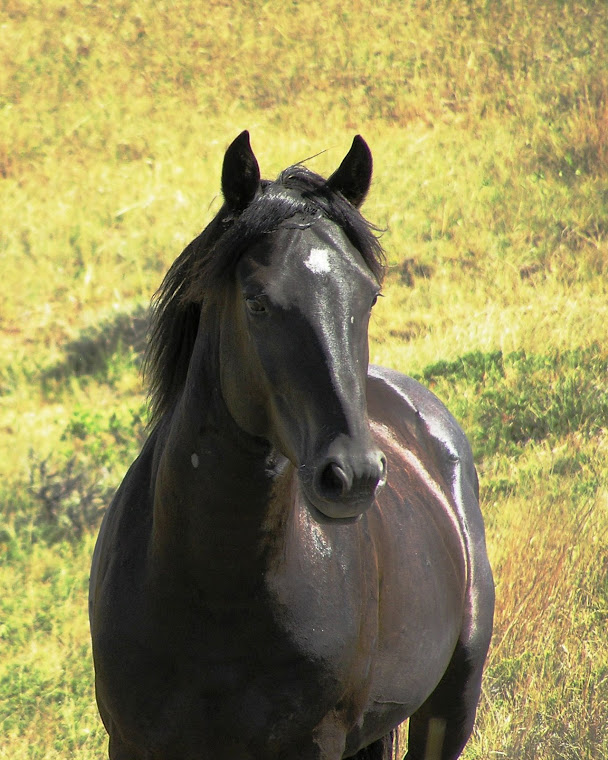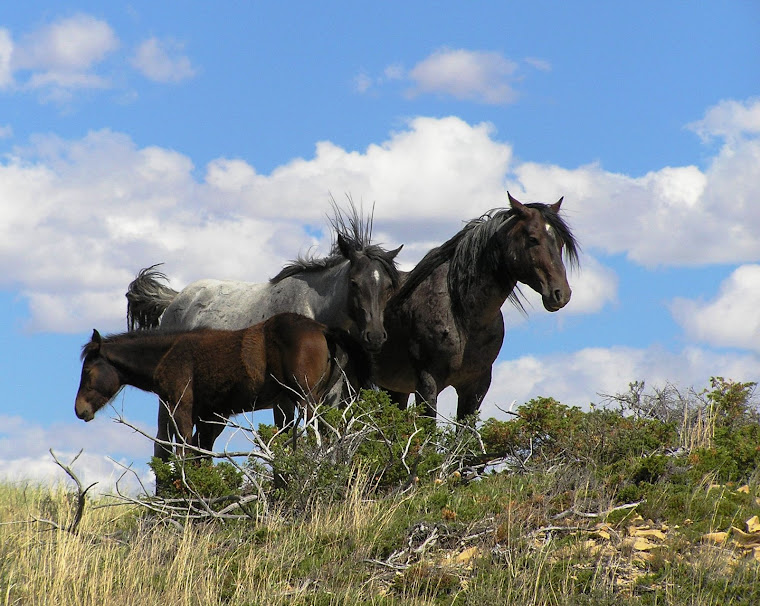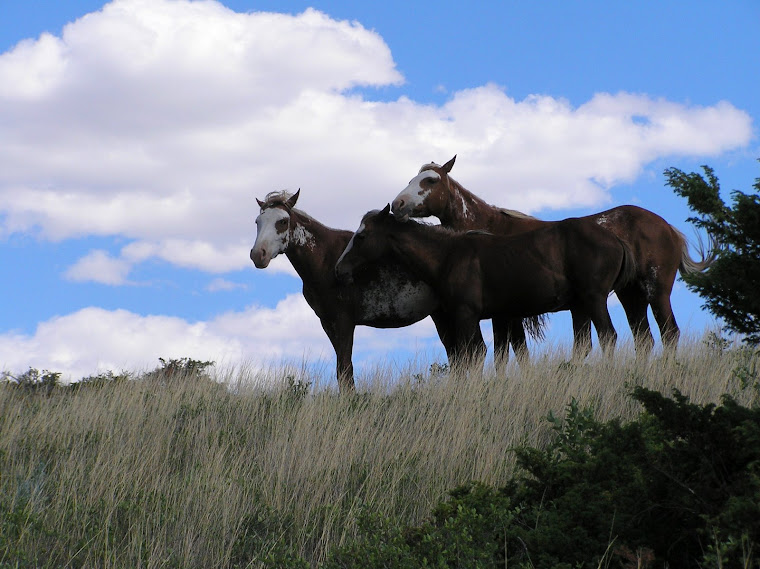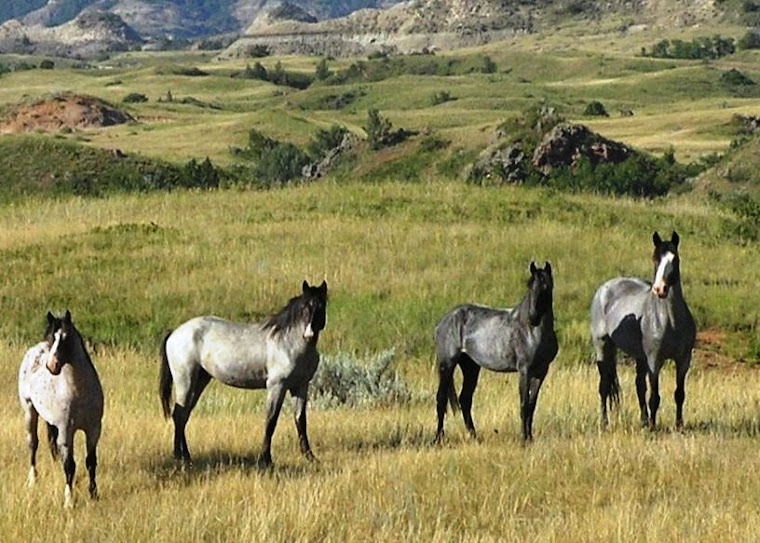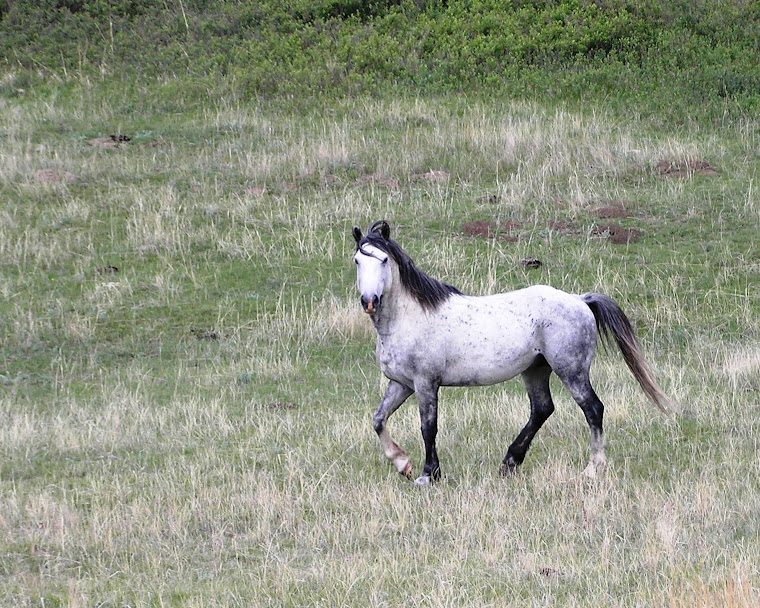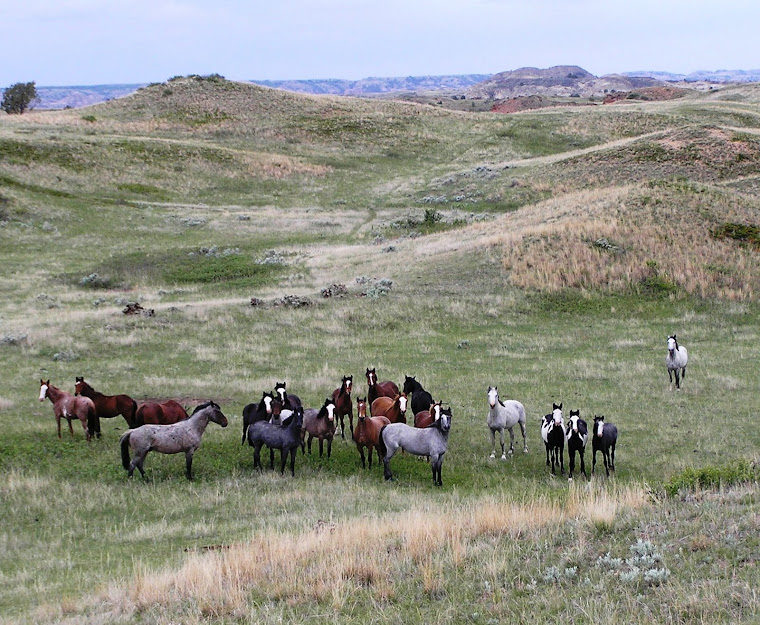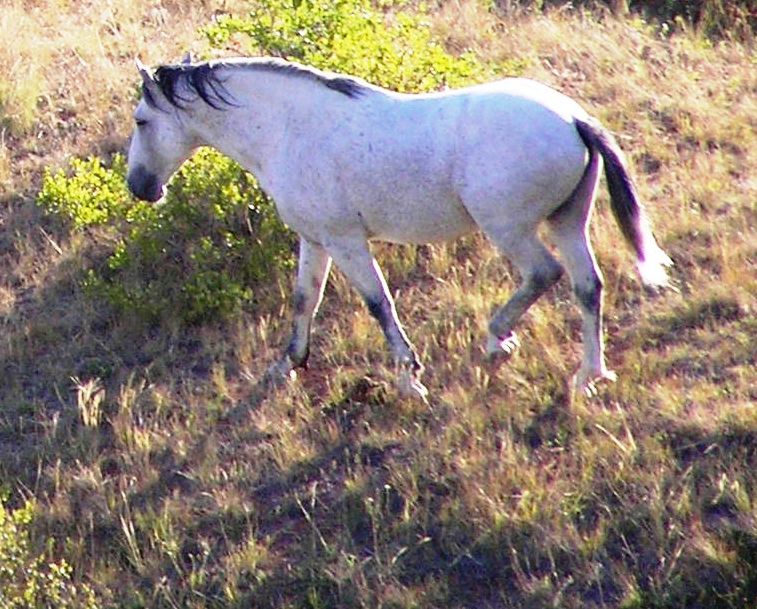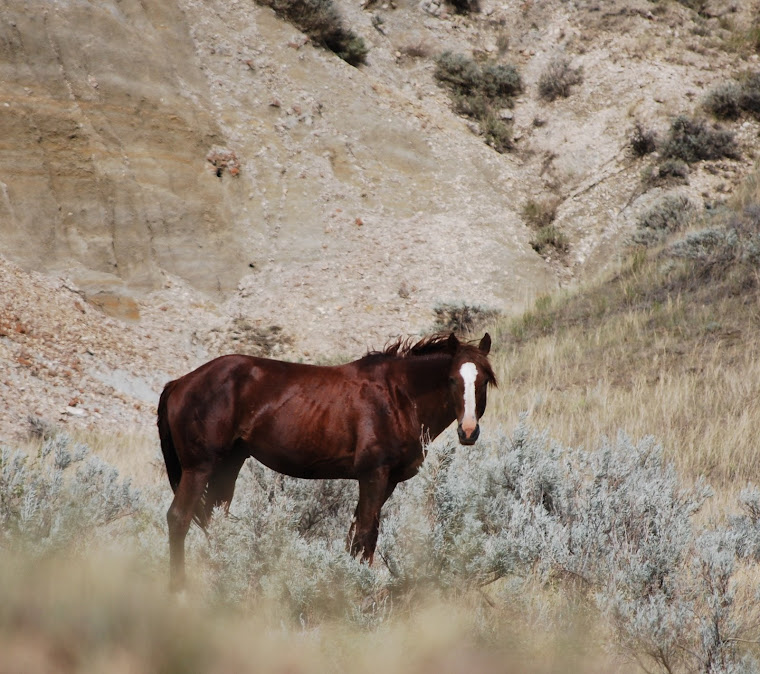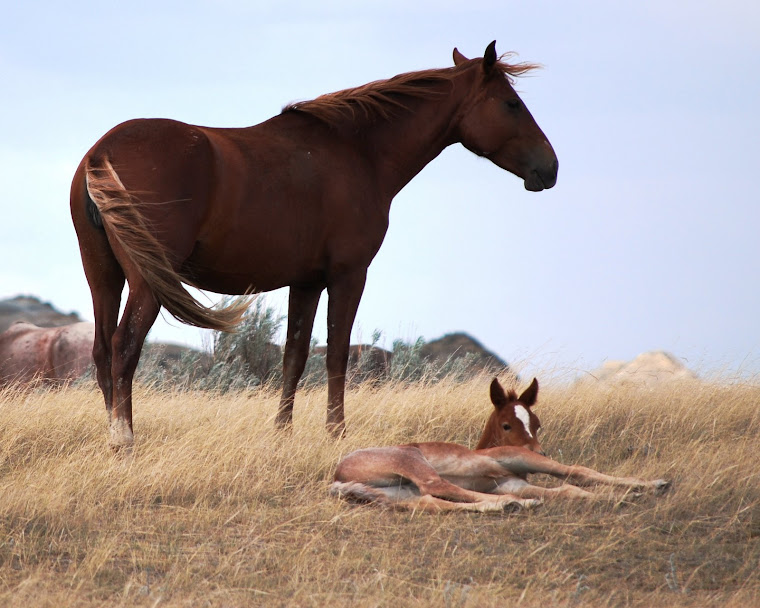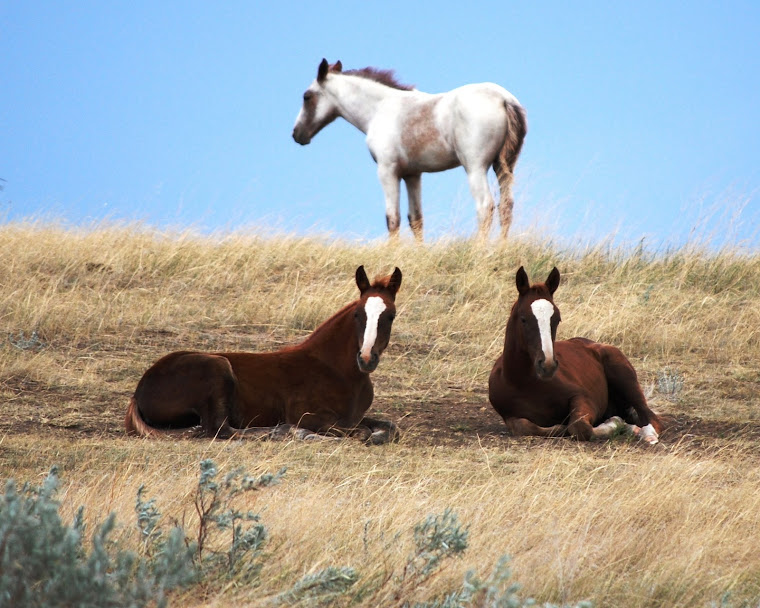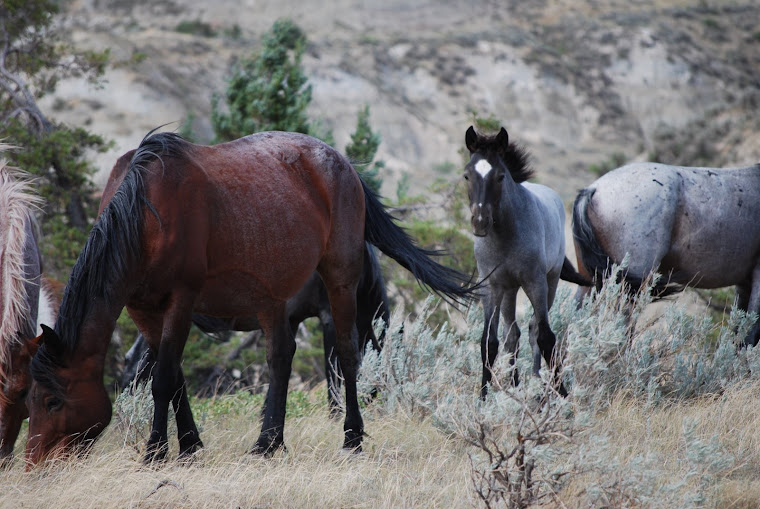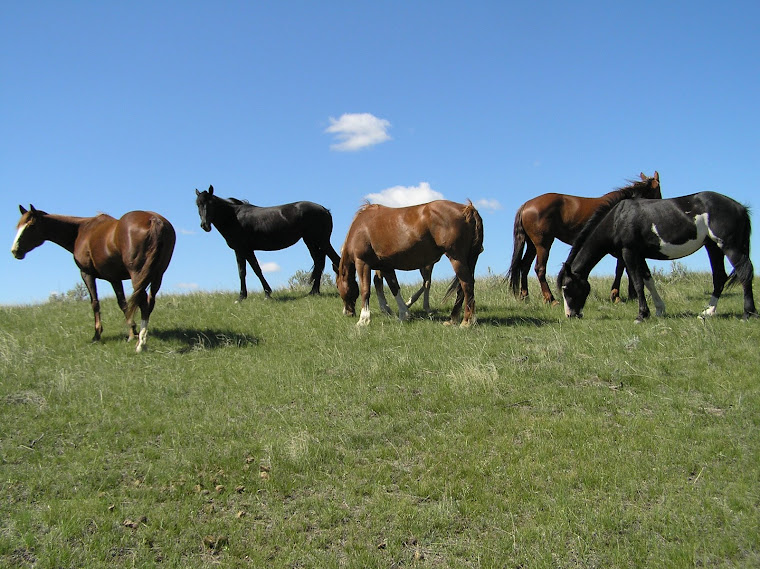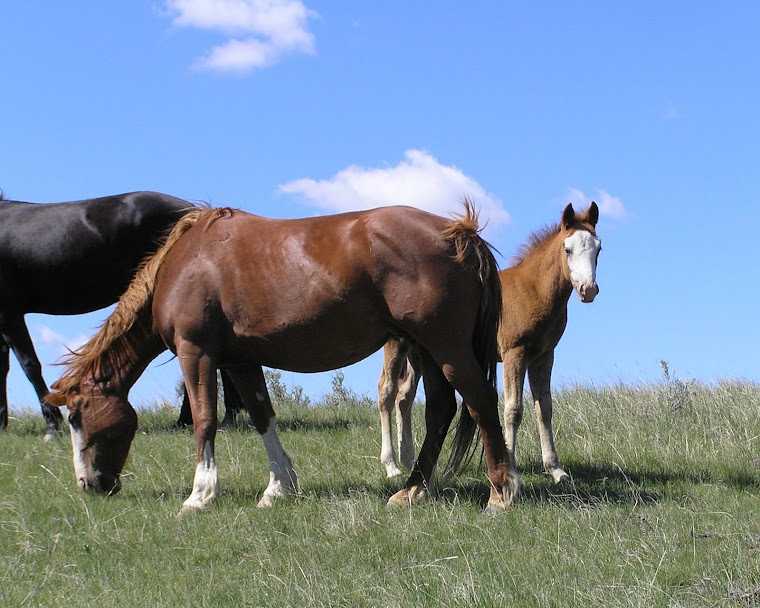It was late September and Whit Hibbard was back to give a refresher seminar on the low stress livestock handling method and and teach park employees with some hands on experience. Whit brought his colleague, Samantha, who has studied the method and worked with Whit on the ranch and at Big Bend. We spent one day showing Samantha the park, the handling facility, and what horses we could find from the truck, talking strategy of which bands might be the best to approach and where would be the best place to try to pen them.
Friday morning was the short seminar where we were reminded of the main points of low stress handling: work with the animals, not against them, don't act like a predator, let our idea become the animal's idea, make the wrong thing difficult and the right thing easy with pressure and release. Personnel were able to practice the techniques with some domestic horses and cattle that afternoon.
Henry and I opted to ride out with Samantha to check out the sheep pen, make sure the gate was locked on the south side, lay a trail to the pen so that there would be fresh horse scent on the trail, and scout for the bachelors we had seen in the area the day before. We were able to find only one bachelor, but approached him to see how large his flight zone was. He was totally unconcerned with us, so we thought he would be a good option for another field trial to see if Whit could repeat the success he had with the L band earlier this year.
Since we wanted to find the five other bachelors we had seen with "Ollie," we spent the morning scouring the hills and valleys for about a mile either side of the river, but were not able to find any more horses. Whit took a couple hours to take the lone stud to the sheep pen, and with Samantha's help was able to pen him.
The next day we rode from the handling facility. I spotted High Star in the distance on Talkington Trail, so we rode to the north to get around him. While we were covering that distance, High Star and his band of seven moved to Lindbo Flats. We were able to approach them and shrink their flight zone some, but there were 39 other horses in the area, milling around and playing on that cool, windy day, so it was difficult to get the band to settle. Before we got very close to them, Pale Lady decided it was time to leave and even evaded High Star's attempt to head her off. We took a look at several other small bands on the flats and were able to move one small band of bachelors to the east, but then a large group of over 20 horses came toward Whit and Samantha, cutting around the ridge about 30 feet in front of them taking the bachelors with them. The whole 47 horses ran in circles as if to show us that they were to happy to be free and didn't want to cooperate with us.
The following day we tried another tactic, finding the horses from the loop road. Henry and I went out early and found four bachelors on Paddock Creek where the road crossed it. We were able to call Whit and tell them where to park to unload their saddled horses. We now had most of the day to move the small band down Paddock Creek Valley to either the Peaceful Valley Ranch pen or the sheep pen. We decided it was best to have only Whit and Samantha work with the horses and the rest of us including our friend, Laurie, from the North Unit, guide them from high vantage points along the way.
On this cool morning these bachelors were also feeling frisky, but after a time of acclimating them to his and Samantha's presence Whit initiated some movement down the valley to the west. I had told Whit that the trail started on the south side of the creek but then crossed and remained mostly on the north side the rest of the way to the river, so it was his plan to move them slowly along the bottom just south of the creek until he could cross them over to the north side. Suddenly the bachelors had other plans and ran up a valley to the south. Whit and Samantha followed them and were able to find them stopped on the high ground below the Badlands Overlook where another bay bachelor joined them. We were able to observe all this from a high butte from which we could call Whit and Samantha with locations of the horses and possible routes to try once they were able to move them again.
After some time of getting them to settle down, Whit attempted to move them again the to west. They went west initially, but since they had a bachelor from the B band with them, he wanted to go back to the east and turned them back. Whit was again able to follow them back east where they turned onto the loop road. With Whit trailing along behind, they followed it for several miles. We hadn't thought of such an obvious route to get from the rough country below Badlands Overlook to the relative rolling terrain of Johnson Plateau, but it certainly made the going easier for Whit and his horse.
Laurie and I went ahead, opened the ranch pen, and left her horse in an adjoining pen for bait, but the bachelors decided they wanted to go south and once they reached the river bottom, they headed straight for the sheep pen. Henry and I took off at a brisk trot for the sheep pen to get it open before the band reached it. Whit and Samantha held them up until we could get there and get out of the way. At one time a group of hikers frightened the horses up the ridge to the west and Whit thought they were gone, but they came back down. We joined Whit and Samantha about a half mile from the pen and shadowed them as we asked them to move again. The horses were at first wary of the additional riders, but accepted us and started down the trail. By that time the two lame bachelors had dropped out, so there were only three left. They were all used to running on the river bottom, so it was a familiar place to them. They moved quietly along the trail until they came to the wing fence which was made of plastic snow fence. If it was the fluttering, shiny snow fence of just the appearance having nowhere to go, I do not know, but they suddenly broke and ran for the river and through a thick stand of Cottonwood and Juniper. The day had been long and was coming to an end. Whit decided not to follow. We had failed to pen the additional bachelors, but was it really a failure? Whit had been able to move the horses several miles through rough terrain and bring them right to the mouth of the sheep pen. Maybe with a larger opening and better wing fencing we would get them in another time.
It was certainly an adventure Henry and I will never forget. We gained more respect for Whit's skills to be able to do what he had just done. We gained new respect for our horses, who had been up to the challenge of taking us safely across the rough terrain for four long days. We gained priceless experience and insight as to the effectiveness, but difficulty of using the low stress methods in this park and we gained two great new friends in Whit and Samantha. All in all it was a very successful five days.
Oh, yes, and Ollie? we let him go.
Saturday, October 4, 2008
Subscribe to:
Posts (Atom)


